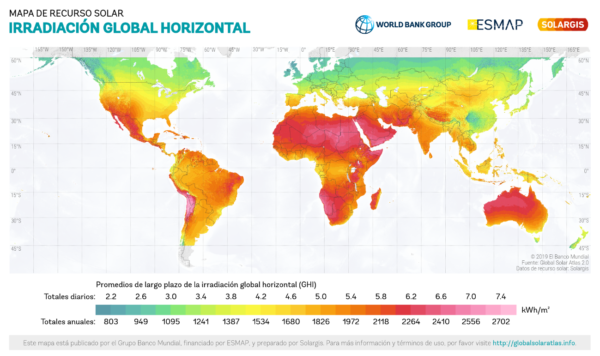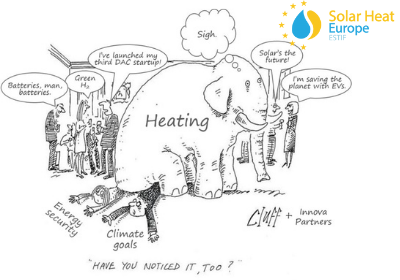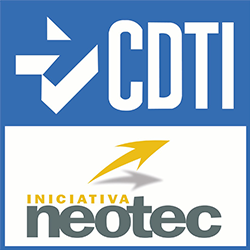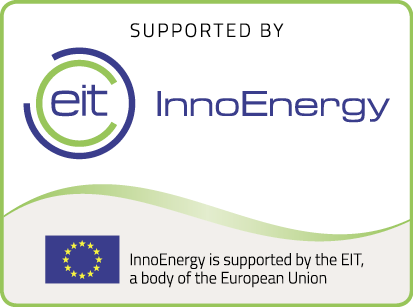Solar Energy: Everything You Need to Know
Inexhaustible, clean and available: solar energy is considered to be the energy of tomorrow, of the future. In a context of climate change and strong variations in the price of fossil fuels, combined with the urgency and need to reduce CO2 and greenhouse gas emissions, solar energy is at the forefront of alternative energy sources.
What is solar energy and how does it work?
Solar energy is defined as the energy diffused by radiation from the Sun, located 150 million kilometres from the Earth. It comes from the nuclear fusion reactions that drive the Sun, and is composed of different types of radiation (gamma rays, visible light and radio waves) made up of photons, the fundamental building blocks of light and vectors of solar energy. In addition, the Sun’s gaseous reserves can be counted in billions of years of fusion, making solar energy an unlimited source of energy for humans.
On Earth, solar energy is at the origin of everything: the water cycle, the wind cycle and the photosynthesis of the plant world, on which the animal world and humankind depend. In other words, solar energy is the source of all forms of energy production used on Earth, except for three types of energy: nuclear energy, geothermal energy and tidal energy. Today, we already use solar energy and, for a long time, we have been transforming it into other forms of energy such as chemical, thermal, kinetic, electrical and biomass energy.
Characteristics of solar radiation on Earth
The solar energy received at a point on the globe depends on:
- the solar energy sent out by the Sun, which fluctuates with its melting activity;
- cloudiness (clouds, fog, etc.), which is, for example, high at the equator and lower in the intertropical zone.
- Latitude, season and time of day, which influence the height of the sun in the sky and thus the energy received per unit area on the ground

Mapa recurso solar irracdiación global
Modelling the distribution of solar energy in the world – Source Global Solar Atlas, World Bank..
Solar energy is measured in joules (J) and power in watts (W). One joule is equivalent to one watt for one second.
Every year, the earth’s atmosphere absorbs 3,850 zeta joules of solar energy. (1 ZJ= 10 21J).
Solar energy types
There is a lot of research on the different techniques for exploiting solar energy. Today, we can say that there are three types:
-
Photovoltaics (PV)
The term “photovoltaic” refers both to the physical phenomenon discovered by Alexandre Edmond Becquerel in 1839 and the associated technology. The basic principle of this operating technique is to convert the sun’s energy into electricity.
Photovoltaic solar panels consist of different layers of positively and negatively charged photovoltaic cells. As soon as a proton passes through the layers, an electrical voltage is produced. These layers capture the sun’s rays, which they transform into a photovoltaic cell, and only manage to convert 20% of the captured radiation into electrical energy.
-
Solar thermal energy (PVT)
Thermal energy consists of using the sun’s rays to produce heat. The heat produced is mainly used to heat water, buildings and even swimming pools. But more indirectly, the heat produced by these solar thermal panels can be used for solar cooling, desalination, etc.
The principle is the same as that of photovoltaic energy, solar thermal panels are composed of thermal collectors that absorb photons from the sun’s rays and transform them into heat. This heat is transferred to a gas or liquid, called a “heat carrier”, which transports it to the heat accumulator. PVTs are capable of converting 75% of the captured radiation into heat.
-
Hybrid solar energy
This type of solar exploitation developed in the 1970s refers to hybrid solar panels. They are able to generate electricity and hot water simultaneously using solar radiation. This is achieved by photovoltaic cells that produce electricity, a hydraulic system that heats the water and a technology that minimises thermal losses.
The latest breakthrough in hybrid solar technology has been developed and invented by Abora Solar with its AH72 SK technology. The AH72 hybrid solar panel is an ultra-efficient hybrid solar panel. This panel is capable of generating the same energy as separate thermal and photovoltaic panels in only half the collector area. In addition, it can even produce more electrical energy than a conventional photovoltaic panel.
Benefits and advantages of solar energy
There is a reason why solar energy is considered by many to be the energy of the future. It has many advantages that make it the perfect and ideal solution for anyone who wants to save money on their electricity bill and, at the same time, be environmentally friendly.
-Solar energy is a renewable energy source.
In fact, it is a renewable and clean source of energy, as it does not emit greenhouse gases. It is therefore non-polluting. It is also an inexhaustible source of energy, since its origin is the sun itself. Although the sun does not have an unlimited lifetime, it still promises us its radiation for many centuries to come.
– Solar power saves you money on your electricity bills
Solar energy can make you independent of traditional electricity providers. As the sun is totally free, no one can charge you anything. Thus, you will achieve significant savings on your electricity bills by not having to pay any tariffs.
– Solar power helps control rising energy costs
With solar energy you can achieve self-consumption of energy. This gives you the freedom from dependence on traditional energy suppliers and their rising prices. You are no longer affected by tariff flows and have full control over your energy costs. It also allows you to produce and consume your own electricity and heat, in the case of hybrids, while reducing your bills.
– Solar energy increases the value of your building
Solar energy is the energy of tomorrow, the energy of the future. By opting for solar energy, you are opting for the future and it pays off. Indeed, it is a real advantage to have solar energy installations in your building for sale. You are selling a building that cares about the quality of life of its users. They will be able to produce their own electricity, and heat in the case of hybrid solar panels, thus meeting their energy needs without having to rely on a third party.
– Solar energy has a positive energy yield
A solar system pays for itself very quickly. On average, it only takes 4 years to see a hybrid solar system pay for itself and from the first day of installation you save on your energy bill. In addition, there are various state and regional subsidies and grants available for solar installations, both for private individuals and companies.
Sources
- « Le rayonnement global (GHI) s’obtient en ajoutant trois types de rayonnement : le rayonnement direct, le rayonnement diffus et le rayonnement réfléchi », définition EDF ENR.
- Selon l’AIE, le parc solaire photovoltaïque mondial a produit plus de 460 TWh en 2017.
- « What are the top solar panel companies & manufacturers in 2019?», energysage.
- « Solar Lighting Systems Module Students Guidebook», Ministère indien en charge de l’énergie.
- Données de l’AIE sur l’énergie solaire.
- « Energie solaire » de connaissances des énergies, 2019.
- « Énergie solaire : les avantages et les inconvénients », Idelect Plus, 2019
Share this article on your social networks
Subscribe our Newsletter!
External news
Featured Post
Recent Posts
Related Posts…
Write us, we will answer you as soon as possible.
Responsible for the data: Abora energy S.L.
Purpose: Sending emails with news and offers.
Legitimation: Your expressed consent.
Recipient: Subscribers’ list in Mailchimp.
Rights: Access, rectification, elimination, anonymity, portability and forgetting data.












